knowledge
Table of Contents
In the goldfish world, goldfish have names for their body colors. In this article, I will explain two terms often seen in specialty stores.
1. red (bare red)
2. white
3. black
4. chintz
5. cherry blossom
6. Sanshoku (Calico)
7. 6 scales
8. blue
9. tea
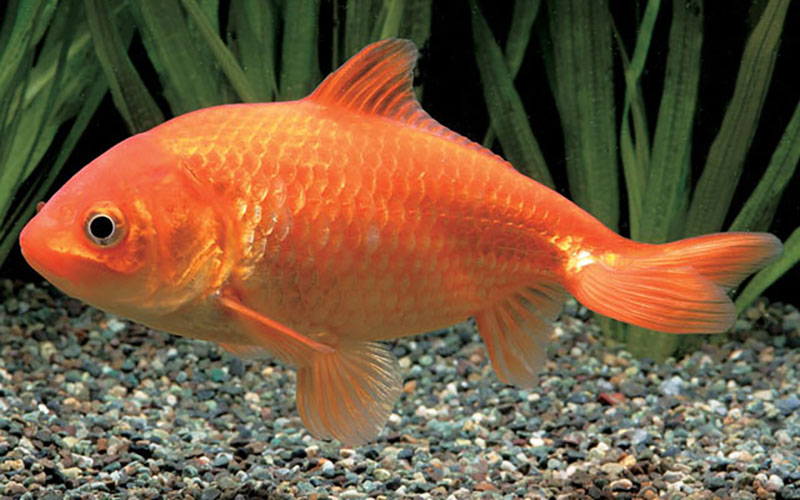
What is bare red?A goldfish whose entire body is red (including orange strains).It is the most recognizable color of goldfish because it is the color you see most often in goldfish scooping. Although we have said that they are all red, their entire body is rarely the same color, and it is difficult to define some of the colors, such as darker on the back and lighter on the belly, or whitish on the tips of each fin. The red scales may become lighter as the fish grows, or the color of the scales may gradually turn white.
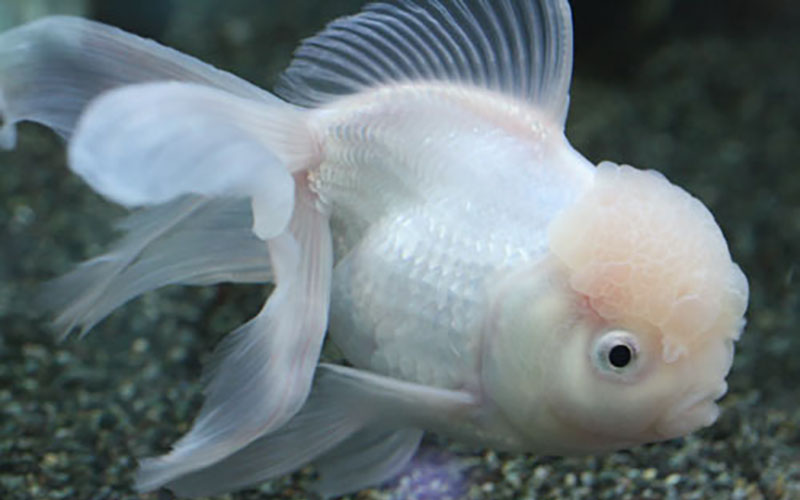
White, as the name implies, refers to goldfish with a body color that is entirely white. White goldfish are,Until a decade ago, white was a color that had little commercial value and was not favored in the goldfish world. Recently, however, white goldfish have become more popular because they can be differentiated from other goldfish (bare red and chintz) by their white color, and because LED lighting has started to replace fluorescent lighting, which makes the color white look more beautiful.Even within the same white coloration, the coloration varies, with some individuals having normal scales and pure white, and others having transparent scales and white dermis. The latter coloration is often closer to a pale dairo color (hada color) than to white. Also,The "albino" type is easily mistaken for white. Albinos are characterized by their "lack of color.Albinos are individuals with a genetic disorder that results in a congenital lack of melanin due to a deficiency in the genetic information involved in melanin biosynthesis. At first glance, it may be difficult to distinguish albino individuals from those with white bodies, but the characteristic eye color can be used to distinguish them. White individuals have black eyes, while albino individuals have red eyes due to the transmission of capillaries in the pupil.
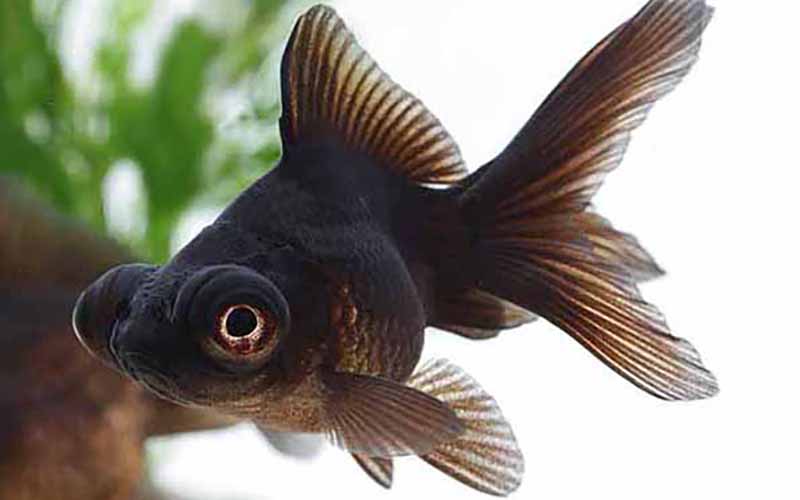
The most well-known black color is dekomegane. Some other species, such as the Woran lionhead and orchid casts, also have black color characteristics. As well as red scales,Black scales may also fade as they grow, and when the color fades, other colors, such as red, often enter the pictureIt is very difficult to keep the black color bright. It is very difficult to keep the black color bright, and the price of a three-year-old or older jet-black dekomekin that has grown to a large size can be astonishing.

Among the colors of goldfishGoldfish whose body color is composed of only two common colors, "red" and "white," are called chintz.When there are many red areas, it is called red chintz, and when there are many white areas, it is sometimes called white chintz. Incidentally, the word "chintz" originally refers to a speckled pattern. In addition to chintz, it is sometimes called "red and white" or "red and white". It can be said that this is the most popular color among the body colors of goldfish. In stores and other places, the term "chintz" is often used to describe goldfish such as "chintz~ (name of the species)".
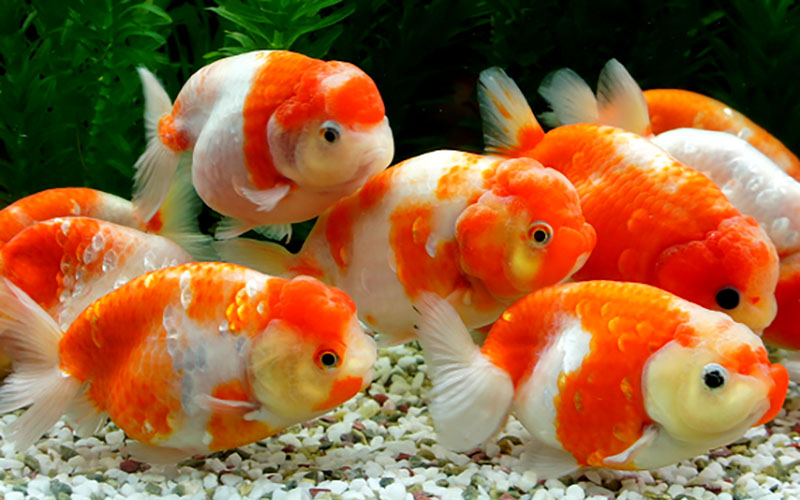
While the chintz described above is normally scaled and reddish-white in color, sakura-iro refers to transparent scales with reddish-white color in the dermis (the area between the uppermost epidermis and the lower subcutaneous tissue).Most people think of cherry blossoms as a whitish pink, but cherry blossom color in the body color of goldfish is a reddish color. It is similar to a pale reddish-white chintz. The red color appears pale because of the characteristic of transparent scales. The most famous species is "Sakura Nishiki". Sakura Nishiki is the "Sakura Ranchu".

Transparent scales with a white dermis (the area between the top epidermis and the subcutaneous tissue below), characterized by a fine pattern created by blue, black, and red colors.It is. Originally, the sanshoku dekomegane was the original, but the beauty of its intricate patterns has now spread to a variety of breeds. The word "calico" originally referred to the "Calico Ryukin. Calico Ryukin" was commissioned by the Americans at the time, so the English name "calico," which means "speckled," came to be used.
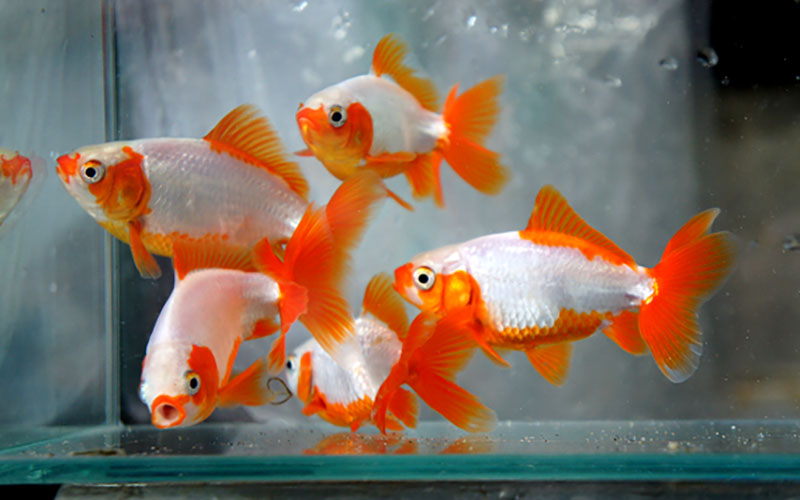
The six scales are the unique body color of the "bullion". So you can think of it as a pattern of bullion.Its body color is white, and it has six red spots on its back, breast, belly, rump, and tail, in addition to the gills, hence the name Rokurin.This distinctive pattern is not a color that occurs naturally. The distinctive pattern is created by taking advantage of the fact that the scales turn white when they are replaced, and stripping off all of the scales of a bare red or chintz patterned goldfish when it is a juvenile, leaving only the body part pure white.
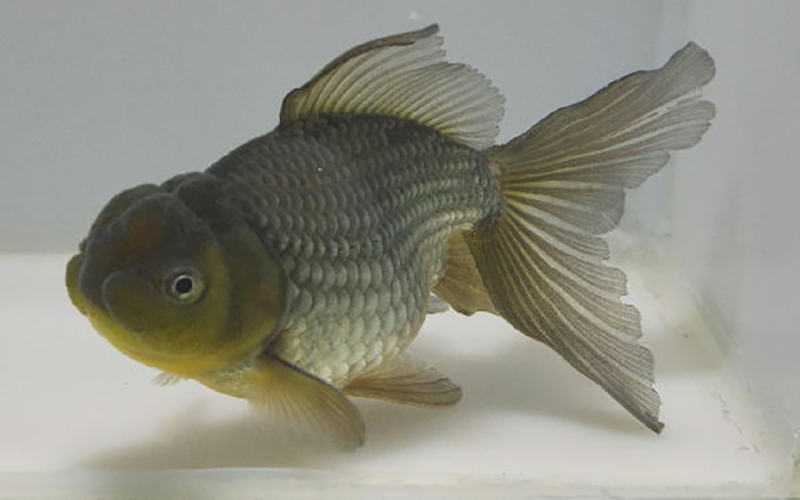
Blue is what you might imagine.It is not a bright blue like the sky, but a dark blue with a bit of gray or a silver color with dark blue.Blue may appear as part of the color of the dermis (the area between the uppermost epidermis and the lower subcutaneous tissue), as in sanshoku (calico), or it may appear in the color of the scales, as represented by the "blue pattern fish". In the case of the color of the scales, it is often more like a lead color.

Tea is,Dark azure body color with a mixture of red, black, and whiteThe first is the "Chakkin". The most famous variety of brown goldfish is the "Chakin".